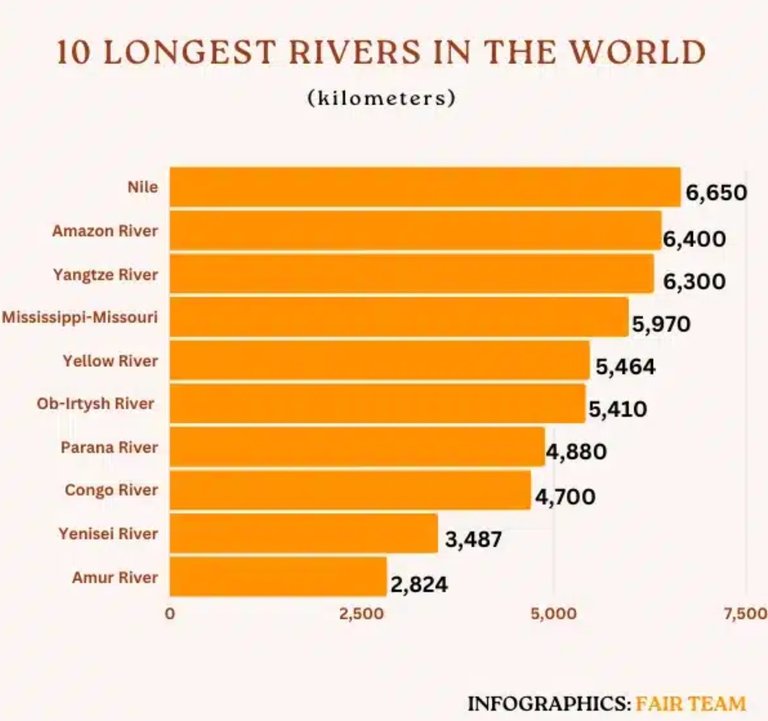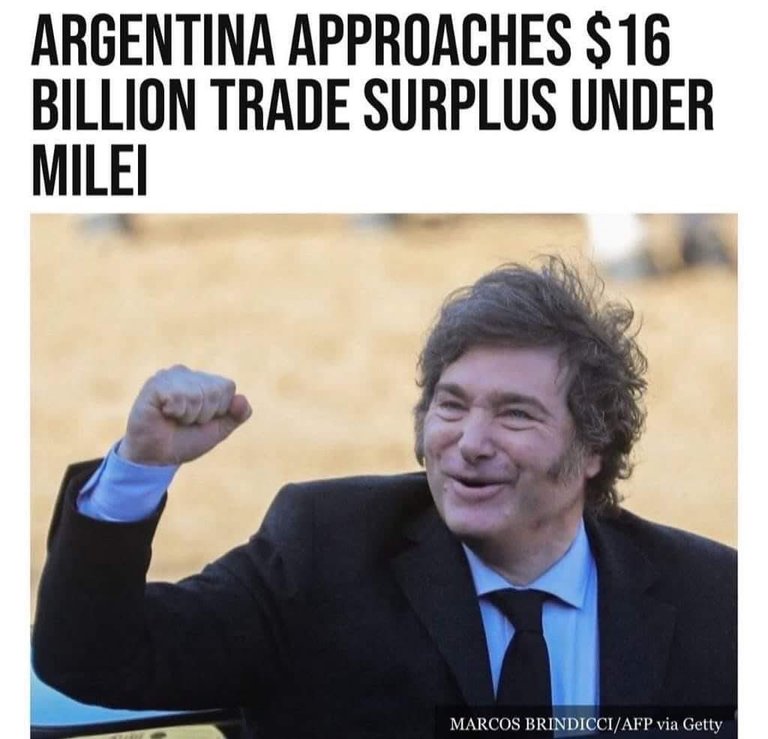Meta admits its moderation flops, calling out high error rates that stifle free speech. They even regret censoring too much COVID-19 content under pressure.
Finally owning up, but can they balance safety and expression? #TechNews
On December 4, 1783, future President George Washington, then commanding general of the Continental Army, summons his military officers to Fraunces Tavern in New York City to inform them that he will be resigning his commission and returning to civilian life.
India’s crypto adoption looks impressive on paper, but it’s more hype than substance. Exchange promos inflate numbers, and unclear regulations hold real progress back. Without good policies, the potential here stays untapped.
Amazon is under fire for allegedly excluding two D.C. ZIP codes from Prime's speedy delivery, despite charging full fees. The AG claims it's unfair to underserved, predominantly Black areas. Amazon says it's about driver safety, not discrimination.
LeoStrategy has acquired an additional 18,429.699 LEO for ~$1,153.45 at $0.0626 per #leo. As of 12/4/24, we hodl 60,711.112 $LEO acquired for ~$3,465.16 at $0.057 per LEO
This is our 6th purchase of LEO using LSTR's initial offering. There are 88,777.972 shares of LSTR remaining in this offering and 100% of the proceeds will purchase LEO and stake it. Link to purchase LSTR is in the reply thread to this thread
As I posted earlier, the major players (Amazon, Microsoft, Google) understand the value of data which is something that everyone will have to understand for Web 3.0 to succeed.
LeoStrategy will be raising a debt round after our initial sale ends. The debt we raise will be used to buy more $LEO for our balance sheet, stake it as LEO POWER and curate Threads
The debt will have no liquidations, be long-dated and have favorable interest rate terms. Very similar to the debt raised by Microstrategy using the BTC on their balance sheet. We'll use the LEO on our balance sheet to do the same
We already have some IRL investors who want to lend us this capital at a sub-8% interest rate to purchase LEO, stake it and continue to stack. They get a guaranteed interest payment, we get more LEO
I had a good treat during the weekend with my siblings: Chocolate pancakes topped with banana and vanilla ice cream with a drizzle of honey, yummy. 😋
The chocolate pancakes were fluffy and I added bit sizes of red and green cherries when I was frying them. I still have some left and will have it for dinner with a cup of coffee.
The Amazon River ranks as the second- longest river in the world, measuring approximately 6,400 kilometers (4,000 miles) long. It is surpassed only by the Nile River, which is about 6,650 kilometers long 1 The Amazon is also recognized as the largest river by discharge volume, contributing significantly to global riverine discharge 3 The debate over its length often arises from differing definitions of river sources and measurement techniques, but it remains a vital waterway flowing through Brazil, Peru, and Colombia 2
Google’s AI weather model is next-level. It beats the world’s most accurate system, predicts extreme events, and does it in minutes. It’s not replacing humans, but it’s a huge leap for forecasting.
It's trained on decades of data, so this could be good for tracking storms and saving lives.
My dogs cornered an opossum last night and my french bulldog (more bulldog than "french"--50 lbs) decided he didn't like it, going for the throat while it was playing dead. I finally pulled him away but the critter was bloodied. It did get up and run away while we settled the dogs so I don't think it was seriously hurt. Now we've got to deal with the repercussions with the dog. He's had his shots at least. The wife is freaking out though... Fun.
The Last month of year has started and we has less then one month for our year end goal and milestone. I do not have any Splinterlands goal for year 2024 but still staking the SPS and SPT earned form the game play and the token earned form the posts was the routine. We are in the second last season of current year.
@pepetoken just sent you a DIY token as a little appreciation for your comment dear @luchyl!
Feel free to multiply it by sending someone else !DIY in a comment :) You can do that x times a day depending on your balance so:
🗞️ #inleo and @dashpay Partner for Seamless Social Media Cryptocurrency Earnings
🤝 Thanks to Brave NewCoin for the content!
#evolution #web3 #trustless #privacy
Link in first comment 👇
https://bravenewcoin.com/insights/inleo-and-dash-partner-for-seamless-social-media-cryptocurrency-earnings
Meta admits its moderation flops, calling out high error rates that stifle free speech. They even regret censoring too much COVID-19 content under pressure.
Finally owning up, but can they balance safety and expression? #TechNews
I guess it's to late. Many people went for alternatives and found them.
On top of that He has to kiss Trump's ass now.
Ha!
Cool
Meta is full of sht and unethical practices
Google's Veo AI video tool sounds exciting. text-to-video at 1080p and over a minute long is impressive, but it’s not there yet.
Marshmallows don’t toast, hands glitch, and Imagen 3’s “realism” misses prompts. Its a Cool tech, but still more promise than polish for now.
I know it would get better soon.
Just image a year from now
Boom, a 1000 threads! #bbh #cent #gifu
Good work
hell yeah! Great work!
Congratulations my dear friend 😊😊😊, we need more... Lol
Hello lions ...
So as a new user is it better buying $LEO or LSTR?
What's the difference?
#askonleo #mmo
What is $LSTR? :(
Im new her
#newuser #newlion #newbie #help
Think of Microstrategy (MSTR). They take in money to buy BTC.
LSTR is kind of the same idea. You buy LSTR to load up on $LEO.
LSTR is available on hive-engine.com
not an either or
Oh, thanks goodness you're here already. Almost tagged you.
I'm confuse here 😩
📝 Dec 04 Diary
🔹Over 30 patients in my chamber!
🔹No treadmill walk but 10k steps!
🔹Quick tour to a park!
#cent #bbh #freecompliments
You're doing great. Well done.
!BBH
Thanks a lot :)
@hafiz34! @luchyl likes your content! so I just sent 1 BBH to your account on behalf of @luchyl. (1/20)
(html comment removed: )
)
Looks like its doing fine today @mightpossibly !
Oh it's doing more than fine! Happy to see your putting it to work.
In case you missed the update: https://inleo.io/threads/view/mightpossibly/re-leothreads-e5zjwnhp?referral=mightpossibly
WOO! It's time to giveaway some more hive blockchain gaming tokens! Enter to win via the article found in the comments section.
https://inleo.io/@cryptochroma/woo-token-giveaway-woo-3-ewq #gosh
Today in #historyonleo
On December 4, 1783, future President George Washington, then commanding general of the Continental Army, summons his military officers to Fraunces Tavern in New York City to inform them that he will be resigning his commission and returning to civilian life.
#americanrevolution
🔗 Source in Comments
Awesome fren
Thanks for your upvote my dear friend!
I'm new here! #newlion #newbie #newlion #help
Cool. Welcome. 💪🏽🦁
🔗 Source:
https://www.history.com/this-day-in-history/washington-bids-farewell-to-his-officers
XRP’s value surged by 420% in a month, becoming the third-largest cryptocurrency and attracting widespread investor interest and potential scams
#xrp #crypto #cent
Crazy numbers despite that ripple was kinda dead at some point.
!BBH
@gentleasdove! @chaosmagic23 likes your content! so I just sent 1 BBH to your account on behalf of @chaosmagic23. (4/50)
(html comment removed: )
)
Here is the #summary of yesterday's AMA
 Link below ⏬
Link below ⏬
https://inleo.io/@ai-summaries/summary-inleo-ama-december-3-2024-39e
All these things are interesting but I don't understand them very well!
A interesting watch if you want to check out why I never use whats app lol
India’s crypto adoption looks impressive on paper, but it’s more hype than substance. Exchange promos inflate numbers, and unclear regulations hold real progress back. Without good policies, the potential here stays untapped.
There is no remedy for love but to love more.
Hi everyone!!!!
#introduction #dash #newbie
#inleo
Amazon is under fire for allegedly excluding two D.C. ZIP codes from Prime's speedy delivery, despite charging full fees. The AG claims it's unfair to underserved, predominantly Black areas. Amazon says it's about driver safety, not discrimination.
What do you think? #AmazonPrime #ConsumerRights
Diciembre en el silencio (ejercicio poético en haikús) (Esp | Eng)
https://peakd.com/hive-179291/@josemalavem/diciembre-en-el-silencio-ejercicio-poetico-en-haikus-esp-or-eng
#gosh #poetry #literatura #spanish #english #leofinance
Currently, the price of $HIVE has been attractive, even though it has a long way to go to evolve to 0.25 per $LEO.
#hiveblockchain #leotoken #cent
🦁
Time to feed LeoAI some more!
Another day summarising the knowledge that is on Youtube!
If you have access to @mightpossibly summarize tool, feel free to drop videos here and make delicoius food for LeoAi!
#threadcast

Over 40k threads in just two weeks. Imagine that counter a year from now
Haha ai summaries are working hard! Maybe almost at @taskmaster4450le level ;)
We need more people doing it.
We do! But until then, we do as vest as we can :)
We can do up to 36K comments from ai-summanizer per day.
my thought exactly. Almost LOL
Considering the system can handle 36K per day means we have a lot more upside.
Not very impressive. LOL
Only 24 videos queued up?

Had to drive and pick up my gf because her train broke down.
Lets do better today 👏
Gotta take care of gf! And we still managed to set a crazy new record yesterday
!summarize
!summarize
!summarize
!summarize
!summarize
!summarize
!summarize
!summarize
!summarize
!summarize
!summarize
!summarize
!summarize
!summarize
!summarize
!summarize
!summarize
!summarize
!summarize
!summarize
!summarize
!summarize
!summarize
!summarize
!summarize
!summarize
!summarize
!summarize
!summarize
!summarize
!summarize
!summarize
!summarize
!summarize
!summarize
!summarize
!summarize
!summarize
!summarize
!summarize
!summarize
!summarize
!summarize
!summarize
!summarize
!summarize
!summarize
!summarize
!summarize
!summarize
!summarize
!summarize
!summarize
!summarize
!summarize
!summarize
!summarize
!summarize
!summarize
!summarize
!summarize
!summarize
!summarize
!summarize
!summarize
!summarize
!summarize
!summarize
!summarize
!summarize
!summarize
!summarize
!summarize
!summarize
!summarize
!summarize
!summarize
!summarize
!summarize
!summarize
!summarize
!summarize
!summarize
!summarize
!summarize
!summarize
!summarize
!summarize
If you're not buying $LEO right now, you're missing out on a 250x
https://inleo.io/threads/view/leostrategy/re-anderssinho-bf9rmrap
250x potential is there?
Yes, easily
LeoStrategy has acquired an additional 18,429.699 LEO for ~$1,153.45 at $0.0626 per #leo. As of 12/4/24, we hodl 60,711.112 $LEO acquired for ~$3,465.16 at $0.057 per LEO
This is our 6th purchase of LEO using LSTR's initial offering. There are 88,777.972 shares of LSTR remaining in this offering and 100% of the proceeds will purchase LEO and stake it. Link to purchase LSTR is in the reply thread to this thread
Got my first LSTR!
LFG!
#whoop #whoop
Buy LSTR's limited initial offering on Tribaldex or Beeswap:
I am Half Way to my 1st Dash Cash out!
Will I be the 1st?
My God I wanted to type more on threads (word count) but I'm limited. I read the premium page and it said I'd be able to text more characters.
🤔
Maybe I will Skip two days coffee and test this out.
Do it. Well worth it. The Premium pays for itself if you are active at all. And the longer threads feature is, by itself, worth the price in my mind.
okay, let me get some moneys here and get this done. Thanks for the motivation
Ai agents will 100x the use of #crypto.
Think about that. Crypto is not for human usage but machine. We are entering a new era of the Internet, one where automation is the standard.
Well not sure it begins for most people.
As I posted earlier, the major players (Amazon, Microsoft, Google) understand the value of data which is something that everyone will have to understand for Web 3.0 to succeed.
LeoStrategy will be raising a debt round after our initial sale ends. The debt we raise will be used to buy more $LEO for our balance sheet, stake it as LEO POWER and curate Threads
The debt will have no liquidations, be long-dated and have favorable interest rate terms. Very similar to the debt raised by Microstrategy using the BTC on their balance sheet. We'll use the LEO on our balance sheet to do the same
We already have some IRL investors who want to lend us this capital at a sub-8% interest rate to purchase LEO, stake it and continue to stack. They get a guaranteed interest payment, we get more LEO
Sounds very promising!
In this conversation on raising the debt at sub 8% how much debt are we talking about, initially?
Thanks!
We'll release details when the time comes
The size of the debt raise is entirely dependent on the success of our initial raise
Started to do a power down of HP because I fomo now. Next week some LSTR will be in my wallet!
Nice! Happy to hear that
👀 LeoStrategy.... 🦁 💪
Moar LEO
Always MOAR... 🤣
Never enough.
We'll keep acquiring
As will I. Just not as quickly. 🤣
Acquire as fast as you can
LEO to $1 IMMINENTLY
All of this is a great strategy and being there on the move to buy can favor a lot, but now once you buy that won't affect the price of the Leo token?
The price of LEO is increasing already and will continue to increase as we buy more LEO
We're aiming to have north of 1.5M LEO by the time our initial sale ends this month
That will be quite a long task.
What is the reason for having such a large number of tokens?
I recommend checking out our blog posts on @leostrategy
Ok, I'll check.
Great work by inleo team so far in building this platform.
Only bug I have noticed since yesterday after the update was sometimes you open a notification response someone sent and it goes error.
#feedback
So in case I couldn't respond to your comment on my thread, please this is the reason.
I had a good treat during the weekend with my siblings: Chocolate pancakes topped with banana and vanilla ice cream with a drizzle of honey, yummy. 😋
The chocolate pancakes were fluffy and I added bit sizes of red and green cherries when I was frying them. I still have some left and will have it for dinner with a cup of coffee.
Do you like pancakes? How do you like them?


#foodtalk #winandasworld #chocolatepancakes #pancakes #cent #photographers #food #foodphotography #foodie
It’s time to pay for premium and support what khal is building.
Just paid mine too
Your are very correct 😊😊😊😊😊...
Close to $0.08 $LEO right now!
Where can I see the $0.08?
I looked on Hive engine :)
LEO is 0.22x $HIVE so you can just use basic math with the current HIVE price. (It is not $0.08 yet.)
Damn #math^^
why is the $LEO ticker wrong anyway?
I think $ uses api from Coingecko. And on coingecko its not Hive native leo which is listed. Think its the leo over on binance smart chain.
@khaleelkazi can probably explain more correctly than me :)
Yeah it's using Gecko and for some reason, they are out of date
Thx for clarifiying :)
I don't know... I do know that they don't track the Hive-engine pricing, though.
Maybe we should #feedback that?
i think they know, because it‘s wrong for some time now …
https://tribaldex.com/trade/LEO
Are all of the tickers on INLEO this off?
https://tribaldex.com/trade/LEO
Today when I went to pick up my children from school, one of them received a gift from his teacher, it was a calendar with his photo.
He's excited to put it in the fridge, but I told him to wait for his mom to get home so she can see it too.
Need more info about $LSTR?
#LSTR #Inleo #LeoStrategy #crypto
Did you know?
That the 2nd longest river on planet Earth has not even one single bridge over it?

The Amazon River ranks as the second- longest river in the world, measuring approximately 6,400 kilometers (4,000 miles) long. It is surpassed only by the Nile River, which is about 6,650 kilometers long 1 The Amazon is also recognized as the largest river by discharge volume, contributing significantly to global riverine discharge 3 The debate over its length often arises from differing definitions of river sources and measurement techniques, but it remains a vital waterway flowing through Brazil, Peru, and Colombia 2
Bcoz of its width and inhabitble rainforest.
That’s impressive! #bbh #cent #inleo #dailydook
The best way to assess a government is by talking to the grassroots, not by reading the headlines.
Google’s AI weather model is next-level. It beats the world’s most accurate system, predicts extreme events, and does it in minutes. It’s not replacing humans, but it’s a huge leap for forecasting.
It's trained on decades of data, so this could be good for tracking storms and saving lives.
Happy $LEO Power Up (Every) Day OR
Jongo Day? #askonleo #polls #lolz #pepe #cent
https://inleo.io/threads/view/jongolson/re-leothreads-2wsjxbwks
Congratulations
My dogs cornered an opossum last night and my french bulldog (more bulldog than "french"--50 lbs) decided he didn't like it, going for the throat while it was playing dead. I finally pulled him away but the critter was bloodied. It did get up and run away while we settled the dogs so I don't think it was seriously hurt. Now we've got to deal with the repercussions with the dog. He's had his shots at least. The wife is freaking out though... Fun.
I found a new sword while questing today!
Excellent, now you can be stronger and kill everyone.
Yes!
Victory shall be ours
Of course it is
1/3🧵 #threadstorm
The Last month of year has started and we has less then one month for our year end goal and milestone. I do not have any Splinterlands goal for year 2024 but still staking the SPS and SPT earned form the game play and the token earned form the posts was the routine. We are in the second last season of current year.
#outreach #splinterlands #play2ean
2/3🧵
Summery of Season Rewards
Total Battle Played - 346
Glint Rewards - 159066
Longest Streak - 7
Ranked battle SPS Earning - 0 / 373.918
SPS Staking Rewards - 281.767
Brawl SPS Earning - 0 / 0
Tournament DEC/SPS Earning - 0 / 0
Land Rewards (SPS) - 59.289
Total DEC/SPS/Merits - 0 / 714.974 / 0
Total Season Earning in $ (SPS only) - 7.5 aprox
3/3🧵
Check my latest post where I shared my views on same.
#gosh
https://inleo.io/@guurry123/sps-glint-and-gladius-november-endofseason-rewards-in-splinterlands-87j
„A keyboard is for typing!“ 🤯
One single thread from me today #gmfrens and GN
Good evening from here. Hope you are doing great
that will do lol
Hi, @solymi,
This post has been voted on by @darkcloaks because you are an active member of the Darkcloaks gaming community.
Get started with Darkcloaks today, and follow us on Inleo for the latest updates.
$LEO @ $1 is gonna be fun!
Okay now I at least have some $LSTR!
#leostrategy #leo #everythreadmatters
Congrats! I got a few too and will buy more soon.
Thanks, so much to buy and so little money
Yeah, that describes my entire Hive life in a nutshell. 😅 !LOL
lolztoken.com
Because they have two left feet.
Credit: marshmellowman
@anderssinho, I sent you an $LOLZ on behalf of chaosmagic23
(1/10)
Delegate Hive Tokens to Farm $LOLZ and earn 110% Rewards. Learn more.
💪🏼🦁👍🏼
@anderssinho! @master-lamps likes your content! so I just sent 1 BBH to your account on behalf of @master-lamps. (3/5)
(html comment removed: )
)
Freakin great !BBH
Dreams are the touchstones of our characters.”― Henry David Thoreau
#dreams #dailydook #writing
I would like to learn more about #inleo
But I need more RC
Good day lions!
they are going to pass my 70k staked real fast.
https://inleo.io/threads/view/leostrategy/re-leothreads-kbefsqsy
Ooooh? They are fast pushing the limits. 🤣 That could really push the $LEO price.
That's a lot of token, the good thing is that they supported everyone.
meh.
It’s the outside investors in the next round they will make money off of it.
And that amount is because Khal is throwing money at it.
I would still rather have my own stake that I can control if I hold or when I can take profits.
yeah I’m just trying to stay ahead. 😂🤣. I need to find more money to buy. I cannot compete with khal.
That's a lot of token, the good thing is that they supported everyone.
big 10k worth of $HIVE sitting in their account....they are about to move the needle big time lol
This photo was taken circa 1959 and features the house used as headquarters by General Meade during the Battle of Gettysburg.
#filmphotography #bbh #cent
Check out the original post for more photos from this set: https://ecency.com/photography/@darth-azrael/vintage-photos-lot-3-169
Who's pumping HIVE:$0.34

#thread2earn #dailydook
Good to see more pumping
Yeah, it's encouraging. At least for those who Hodl
Da Koreans. :) !BBH !DIY !DOOK
Are they having some kind of party? 😂
!DOOK
They could "bee"! 😂 !LOLZ !DOOK !BBH
lolztoken.com
The trailers
Credit: reddit
@luchyl, I sent you an $LOLZ on behalf of pepetoken
(3/10)
Delegate Hive Tokens to Farm $LOLZ and earn 110% Rewards. Learn more.
Then they should party on 🤣🤣
@luchyl! @pepetoken likes your content! so I just sent 1 BBH to your account on behalf of @pepetoken. (15/100)
(html comment removed: )
)
53% of the volume is from Upbit so.....South Korea :)
I knew some guys were up to something. That's all good. Hope it doesn't fall.
Trying to get to the moon the price of the hive.
It's really is.
About time!
wen 50 cents
#mmo
@luchyl! @pepetoken likes your content! so I just sent 1 BBH to your account on behalf of @pepetoken. (10/100)
(html comment removed: )
)
You can query your personal balance by
!DIYSTATSWhat are you expecting from $LSTR? Is it a good thing? What are your thoughts?
#LeoStrategy #microstrategy #cent #inleo
Mostly to keep buying $LEO of the market :)
buy moar $LEO !!!!! lol
Sure! 👍
Mostly good as long as they distribute rewards in the system.
Good for the #ecosystem
I agree, it could push $LEO and the ecosystem further ahead.
https://inleo.io/threads/view/josie2214/re-leothreads-jkck5bvk
Food for Thought ??
#questions #pets #life